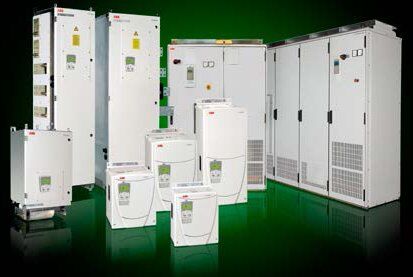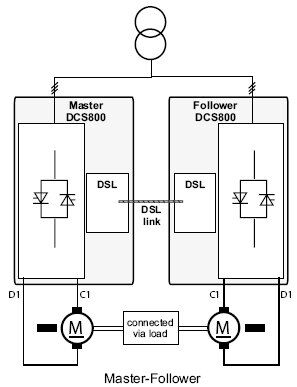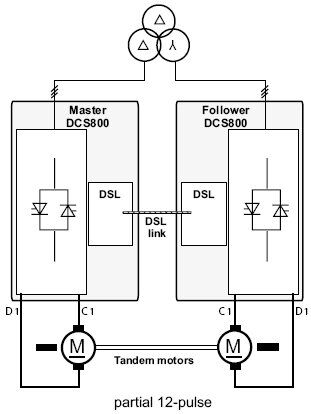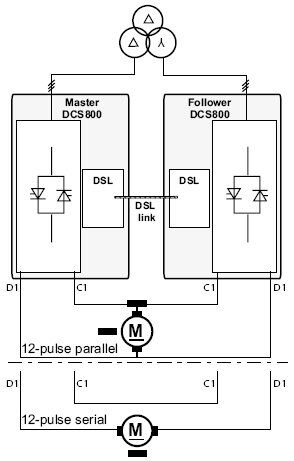
Low voltage DC drives
ABB DC Drives
DCS800, 10 to 4000 hp
DCS800 Firmware
DCS800 Basic Firmware
DCS800 firmware includes the basic function of speed control, armature current, field current and voltage. The flexible design for command location enables fieldbus control, master-follower control, control from hardware signals as well as a mixed structure. The design of drive logic enables a drive reaction defined by Profibus standard but can also be configured to adapt classic command structures.
All parameters can be accessed through network communication or by IEC 61131 or adaptive programming.
Twelve macros are pre-defined and two user-macros can be configured by the user.
Functions of Basic Firmware
- Different speed ramp functions
- Speed control
- Torque control
- Armature current control
- Field current control
- Automatic field weakening
- E-stop function according to Profibus standard
- Dual field control
- Mechanical brake control
- DC breaker control
- Programmable digital and analogue outputs
- Master-Follower
- 16 blocks Adaptive Program
- Interface for IEC 61131 programming
- 12-pulse function – parallel, serial, sequential
- 3-phase field power supply operation
- Converter protection (temperature, voltage,…)
Motor protections
- Stall protections
- Thermal motor model
- 2 channel motor temperature measurement PTC or PT100
- Klixon supervision (RDIO-01 Recommended)
- Speed feedback error
- Over speed
- Armature current ripple
- Armature over current
- Minimum field current
Master-Follower Applications
Drives connected in Master-Follower application
When motors run on a common shaft or other belted or mechanical connection, and run with the same speed or torque, use the master/follower configuration.

Partial 12-pulse Master-Follower configuration
Under this configuration, converters are fed by a 12-pulse transformer with separated secondary windings whose phase positions differ by 30°. This configuration delivers the same advantages concerning harmonics to the network as a standard 12-pulse application (see next item), but no T-reactor is needed.

Typical configuration for high power drives connected in 12-pulse parallel, serial or sequential application
12-pulse systems are used to reduce line harmonics or motor noise level, or to increase output current or voltage of the converter system. Only the 11th and 13th, the 23rd and 25th, the 35th etc. are present. The harmonics on the DC side are reduced also, which increases efficiency.

Specifications subject to change without notice.
ABB DCS800 DC Variable Speed Drives


